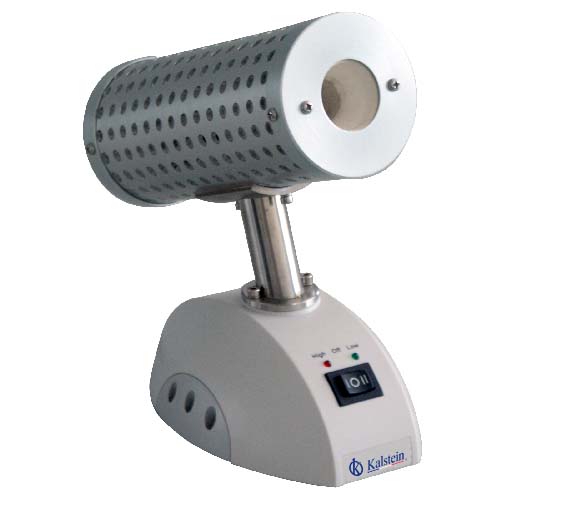Electric incinerators are devices used to burn solid materials, contained in a sealed container. These devices process discarded samples from biochemistry laboratories with the objective of eliminating all organic materials and potential human health hazards. Electric incinerators are considered to be a simpler and more affordable form of incineration compared to conventional incinerators. This technology has been a resource-saving and safe solution for disinfection and disposal of biological waste, increasing the efficiency of laboratory procedures, therefore, it is a useful tool for biochemistry laboratories.
In addition, many of the electric incinerators also come with a variety of additional features, such as temperature monitors, outdoor and control systems. This allows users to monitor and control the incineration process, ensuring that the process is performed safely for personnel and the environment.
Kalstein as a manufacturing company we make sure to cover all your needs and satisfy your laboratory requirements, reminding you that we are manufacturers, we have the best price, sales consultants in any window of the world, know our bacticinerators HERE. Listed below are the practical benefits of an electric incinerator for biochemistry laboratories.
Uses
Electric incinerators are essentially used to dispose of biological waste and to clean equipment used in biochemistry laboratories. This is achieved through a combination of intense heat, atmospheric pressure and a controlled atmosphere. Once the combustible material is at the correct temperature, complete oxidation of the organic waste takes place, thus destroying all living cells. This complete destruction ensures that there is no risk of cross-contamination or infection between samples collected from biochemistry laboratories. This means that electric incinerators can be used to treat infectious materials such as viruses, bacteria, fungi and parasites.
Electric incinerators can also be used to decompose highly volatile and toxic materials produced in biochemistry laboratories, such as acids, corrosive chemicals, organic solvents and flammable liquids. These materials are burned completely, eliminating the possibility of toxicity in the laboratory environment. They can also be used to destroy obsolete equipment, such as inactive reagents, drug samples, enzyme-prepared material and other types of chemicals. This reduces the amount of waste and unused equipment in biochemistry laboratories.
Electric incinerators have become an essential element in many biochemistry laboratories. These devices allow users to treat potentially infectious and toxic materials by thermally deactivating any organic material or biological waste present.
Advantages
Electric incinerators offer a wide range of advantages over conventional incinerators in terms of disinfection and disposal of biochemistry laboratory waste. These devices are portable, so they can be used in confined spaces where conventional incinerators cannot be installed. These devices are more energy efficient because they do not require large amounts of fuel to process the materials, and this reduces energy consumption and operating costs. Electric incinerators are also characterized by a lower emission rate, which makes them more environmentally friendly.
In addition, electric incinerators are less complicated and require less maintenance compared to conventional incinerators. These devices also require fewer trained personnel to operate them, which reduces implementation costs. In addition, electric incinerators generally have a higher burn rate than conventional incinerators, which makes them more efficient. This combination of features makes electric incinerators a better and more economical option for the treatment of waste generated in biochemistry laboratories.
These devices also have a variety of advantages, from portability to lower emissions and low maintenance, making them an ideal choice for waste treatment in biochemistry laboratories.


